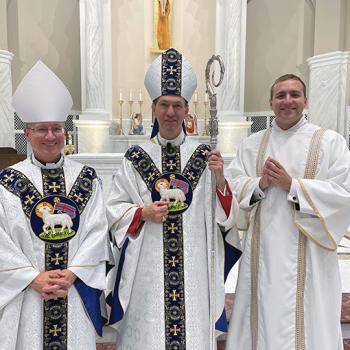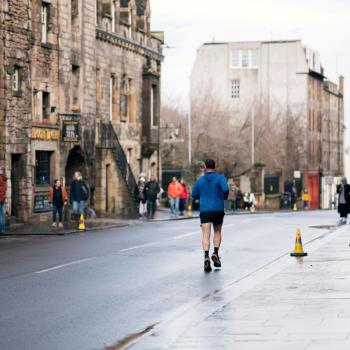The inhabitants of Benares love their food and drink, especially their desserts and their intoxicants. It is almost as though their awareness of death makes them live all the more intensely, sucking the marrow out of life, as it were. Their foods are rich: sweet, fried, or spicy; they drink, smoke, and eat cannabis in different forms; their streets are filthy and chaotic but possessed of an almost maniacal zest for physical indulgence that cannot be found in any other city on the Indian subcontinent, not even materialistic Bombay. Their god, Shiva, is supposed to dance so wildly that he can destroy the world with his dancing. Everything about Benares has an intensity bordering on madness; no wonder people say that once you come to this city of Shiva, you only leave when you leave your body. Kashi has its finger on life's pulse. Yet it calls itself death's last outpost; it is the gateway from the bondage of living and dying, into the great unknown.
Shiva must have appeared in Benares in a time before history. But adjacent to Benares is another holy place, Sarnath, the site of the Budhha's inaugural sermon, some 2,500 years ago, very much within the purview of history. The Buddha too had renounced his kingship and his worldly relationships, attachments, and possessions after he first encountered, with shock and disbelief, the facts of sickness, suffering, and death. It was the knowledge of death that transformed the Sakya prince Siddhartha into Gautama Buddha, the Enlightened One. It is fitting that he too preached a path to liberation from the city where all are set free: Kashi, on the banks of the Ganga, the most sacred of life-giving rivers.
In India it makes sense that Manikarnika, the holiest burning ghat, Vishwanath, the greatest temple of Shiva, and Sarnath, the locus of the Buddha's first teaching, all share the same space: Kashi, where death is defied by living life to its fullest and then transcending mortality altogether in an indescribable freedom. Anyone who goes to Benares is reminded at once of the desires and pleasures of the body, and also of its evanescent nature, its fragile frame that comes marked with an expiry date.
Outside the Vishwanath temple, in the twisting alleyway filled with pilgrims, policemen, and sellers of all kinds of wares both sacred and profane, we stop to taste an extraordinary local delicacy, malaiyya. To make this heavenly sweet you cook milk for so long that it becomes a pot full of fine milky froth, with the solids completely separated out. Into this delicate foam go a few precious threads of saffron, cardamom pods, and sugar. To eat it is to taste fragrance, to inhale flavor, to experience how the lightest, slightest food can produce the most profound satisfaction of one's appetite. I raise my baked clay cup full of malaiyya to the sky and drink to Shiva, whose body is the world, and who holds death in his throat, neither spitting nor swallowing, to the very end of time.
Ananya Vajpeyi teaches South Asian History at the University of Massachusetts in Boston. Her writing has been published in newspapers and magazines in South Asia, Europe, and the UK.
This article is reprinted with permission from Killing the Buddha.




